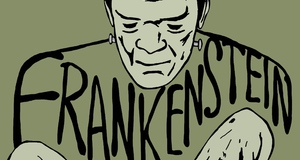The Everyday as Empowering: Violence and Suburban Monotony in the Interwar Writing of George Orwell
By
2020, Vol. 12 No. 02 | pg. 1/1
KEYWORDS:
In the opening of J. M. Richards’s post-war account of suburbia, The Castles on the Ground, the author's commentary is unusually sympathetic to a phenomenon that throughout the twentieth-century had either been critically neglected or judged as monotonous, conservative and tacky.i Rather than challenging these stereotypes, the few exceptions to this rule, Richards among them, have celebrated suburbia as a refuge from the world’s horrors. Richards’s version of suburbia, published while Britain was reeling from the destruction of the war, argues that suburbia is not just an architectural phenomenon but a way of life for the middle-men of England who wish to remain protected in its ‘oasis’ (36-9). In 1918, David Lloyd George promised “Homes fit for Heroes,” catering to the post-war appetite for security and stability. His promise instigated a housing boom; by 1939, 4.3 million new, mostly suburban, houses were constructed (Matthew, 2019). These properties offered a solution to urban over-crowding, promising a utopia of countryside fresh air combined with modern amenities (Oliver, Davis & Bentley, 1981). Because of its focus on nostalgia, tradition and comfort, suburbia is often stereotyped as Modernism’s antithesis: in Design (1938), art historian Anthony Bertram praises Modern municipal estates as the product of ‘the most informed and imaginative thinkers’, posing them as the solution to the ‘indiscriminate sprawling of our towns through ring after ring of shoddy suburb’ (31, 21). At the other end of the spectrum from the Poundian maxim to “make it new” are suburban housing developers constructing decorative wooden beams, steeply pitched roofs and cruck frames in order to “make it old.”ii In his essay “The Everyday and Everydayness” (1987), Henri Lefebvre suggests that one of the key features of everyday life is its repetitive temporality (10). Because of this, he views the experience of everyday life as antithetical to Modernity; if Modernity is characterized by forward-moving, linear time, then everyday time is inherently cyclical, dictated by diurnal rhythms of eating, working and sleeping.iii These cyclical rhythms govern George Orwell’s suburbia: in Coming Up for Air (1939), Bowling grumbles, ‘[n]othing’s real in Ellesmere Road except gas bills, school fees, boiled cabbage and the office on Monday’ (246). In Mourning Modernism (2011), Lecia Rosenthal examines the purpose of catastrophe in Modern writing, arguing that Modern texts pose violence as a ‘counterforce to the draining, seemingly fixed forms of regulative normativity and its holding patterns, the unending lament of taedium vitae’ (2-3). Indeed, the last decade has seen the publication of several critical texts examining the relationship between Modernism and violence, suggesting that there is something inherently brutal about the quest to “make it new.” In particular, the recent work of Deaglan O’ Donghaile (2011), Sarah Cole (2012), Paul Sheehan (2013), and Marina McKay (2017) stresses the centrality of violence to Modernism’s aesthetic makeup. This critical preoccupation with the inseparability of Modernism and violence has often focused on metropolitan literary culture of the early twentieth-century, but is equally present in some of Orwell’s early depictions of suburbia. George Bowling, the narrator of Coming Up for Air (1939), repeatedly imagines a violent intrusion into suburban life, an anxiety embodied in the recurring motif of ruptured domesticity: he sees ‘women pegging out the washing […]. The great black bombing plane swayed a little in the air’, then imagines ‘bloomers soaked with blood’ (17, 21). The disturbing association of violence and domesticity culminates in the bombed house in Binfield which leaves behind ‘a jar of marmalade […] running side by side [with] a ribbon of blood’ (235). Perhaps even more disturbingly, in Keep the Aspidistra Flying (1936), Gordon Comstock imagines the imminent destruction of ‘squadron after squadron’ of bomber planes and Orwell writes that ‘it was a sound which, at that moment, he ardently desired to hear’ (21-2). Later, he clarifies that this self-destructive desire stems from a frustration with life’s banality:
Gordon’s yearning for destruction signals his participation in the quintessentially Modern belief that destruction might instigate socio-political progress or cultural transformation – or, at the very least, breathe some life into suburban boredom. Rosenthal’s characterization of the Modern as continually, and destructively, seeking “the new” serves to expand upon the fundamental difference between Modern linearity and domestic circularity highlighted by Lefebvre. However, Orwell’s interwar texts complicate this, presenting a domestic world that is both circular and violent. The flaws with the Modernist drive for the new that Rosenthal identifies are played out and subtly critiqued in the unlikely landscape of Orwell’s interwar suburbia. By willing destruction, Orwell’s characters in Keep the Aspidistra Flying appear to participate in a distinctly Modern desire for cultural upheaval. Despite being shocked by Gordon’s reckless longing for war as a means of relieving his own disenchantment, Ravelston’s abstract suggestion that ‘we’ve got to die before we can be reborn’ is equally troubling (94). Couched in the apparent cleanliness of theory, his suggestion follows the Marxist line of thought that violence is a necessary stage of revolution.iv In her efforts to undo the critical conflation of Orwell with Gordon and Bowling, Lorraine Saunders (2008) suggests that he is actually far closer ideologically and biographically to Ravelston, but her idea is undermined by this moment in the text. Orwell seems wary of endorsing either of his characters’ destructive views, evidenced in the novel’s conclusion. Gordon’s decision to return to the ‘stream of life’ grants him a palpable sense of relief, and he describes himself as ‘born anew’ (265-6). By fulfilling his ‘destiny’ and recognizing the nobility of a profoundly ordinary, suburban life, Gordon facilitates his own metaphorical rebirth without the death that Ravelston presumes necessary (267). Gordon observes, ‘a typical lower-middle-class street. But not, on the whole, the kind of street that he wanted to see blown to hell by bombs’ (267). With this final realization that his desire for destruction has been naive, Orwell undermines the reckless notion that only violence can instigate change. Indeed, Orwell ends the novel with the ‘stirring’ not of an air raid, but of the baby in Rosemary’s womb (277). I will return to the idea that the mundane can be a source of vital energy later in this essay, but it is important to note here that Orwell encourages us to reconsider the inherent repetition of suburbia as productive, concluding the text with the implication that embracing the stereotypically cyclical life that suburbia offers is, ironically, the most exciting choice that Gordon makes: ‘once again things were happening in the Comstock family’ (277). For Rosenthal (2011), another characteristic of the Modern aesthetic of violence is the tendency to continually stage the imagination ‘on the brink of destruction’ (5). As I have demonstrated, Orwell undermines the notion of violence as an escape from suburbia’s monotony in Keep the Aspidistra Flying. However, Rosenthal’s description of ‘catastrophe culture’ as not merely a self-destructive drive toward the end, but a simultaneous withholding from the crucial end-point, seems to apply to aspects of his writing, suggesting that there are distinctly Modern elements about the way they anticipate violence. The logic of pushing up against the possibility of disaster without falling over the edge is central to the writing of urban Marxian Modernists such as Walter Benjamin, who suggested the truth of the Modern city was only discernible when it was at the point of oblivion (Gilloch, 1996). The desire to “make it new” paradoxically hinges on the fine balance between the necessary destruction of the old without destroying the possibility of something more. Reading Orwell’s A Clergyman’s Daughter (1935) in this light is particularly illuminating: Orwell uses a violent narratorial interruption in order to communicate a sense of being on the ‘brink’, as Rosenthal describes. A Clergyman’s Daughter was written when Britain’s policy of appeasement was still largely favored as a pursuit of peace (Cook & Stevenson, 2014). The serious prospect of another conflict only became increasingly likely later in the decade, with the Spanish Civil War and German rearmament in 1936, and Hitler’s annexing of Austria and the Sudetenland in 1938; written before these events, A Clergyman’s Daughter does not share the same paranoia about imminent war as Orwell’s later work, but its formal instability can be read as a reflection of the heightening but unrealized political tension across Europe (Cook & Stevenson, 2014). Orwell’s manifestation of unrealized tension in the novel conforms to an extent to Rosenthal’s definition of the Modern aesthetic. A Clergyman’s Daughter opens with a description of Dorothy Hare’s alarm clock ‘[exploding] like a horrid little bomb of bell metal’, establishing the tyrannical governance of time over her life (1). This governance is ruptured by Dorothy’s sudden memory loss and poverty that constitutes the text’s middle section. The second time Dorothy awakes in the novel is after her unexplained amnesia: this time, her eyes ‘flickered open of their own accord’, indicating that the following chapters will not only show her violently dislodged from her comfortable, albeit tedious, life, but that she will also be dislodged from conventional temporal constraints (85). Interestingly, this section of the text has been read by Ruth Hoberman (2015) as Orwell’s attempt at Modernist experimentalism for the way it cultivates a sense of timelessness and anticipation. Whereas Dorothy’s previous life is rigidly time-tabled and measured out in exact minutes, Orwell describes her period of poverty in terms of ambiguous ‘moments’ and immeasurable ‘ceaseless nightmarish activity’ (94). The result is that Dorothy’s life, no longer controlled by the incessant progression of time, becomes suspended. The suffocating stasis that Orwell cultivates appears to anticipate a violent conclusion. However, Orwell contains these troubling events within the narrative. After her period of inexplicable deprivation, Dorothy returns home to resume her mundane life. Rosenthal’s study comes to the bleak conclusion that framing crisis as a solution to cultural and aesthetic stagnation is crucially flawed; she parallels the longing for catastrophe to the desire for the “new” – an equally unattainable destination that constantly moves its goalposts – concluding that this “newness,” and the absolute catastrophe that might facilitate it, are impossible. Interestingly, Orwell shows an awareness of this impossibility through the way that he contains violence within the cyclical rhythms of suburbia. The ending denies the conclusive catastrophe that Modern, linear time supposedly works toward. Orwell articulates this realization more explicitly in Coming Up for Air, when Bowling muses that should Fascism take over in Britain:
This realization sounds apathetic, but a later comment in the novel instructs us not to read it as such. Bowling confesses that, ‘I’m not frightened of the war, only of the after-war’ (CUFA, 174). As Orwell explores in Homage to Catalonia (1938) when he compares life in the trenches of the Spanish Civil War to a city clerks’ – ‘as uneventful […] and almost as regular’ – the initial excitement of war quickly dissolves into tedium (22). This is perhaps what he addresses again here: Bowling recognizes that war will not bring a gloriously destructive upheaval of banal everyday life. It is tempting to view the inherent repetition of suburbia as suffocating, but this is not how Orwell’s suburban narratives should be read. By containing violence within the cyclical rhythms of suburban life, instead of letting it climax, Orwell demonstrates an acute awareness of the impossibility that Rosenthal describes: he does not fall victim to the naive assumption that violent catastrophe might enact change. For all Bowling’s paranoia about the violence that might intrude into suburbia, the bomb accidentally dropped on Binfield is not the catastrophic climax of his narrative; rather, Orwell ends Coming Up for Air with Bowling’s anti-climactic return to West Bletchley, and in doing so he re-frames the monotonous life he returns to as powerfully enduring. Recent studies in Modernist and interwar literature have turned their attention to the relationship between domesticity and Modernity: notably, Alison Light’s Forever England (1991) unpicks the binary between the Modern and the conservative, challenging the notion of progress and nostalgia as mutually exclusive concepts through examining the cultural turn inward toward domesticity and privacy during the interwar period. Liesl Olson (2009) and Thomas Davis (2015) build upon these ideas, placing a critical spotlight over the role of the quotidian in times of conflict and turmoil. However, both Olson and Davis treat suburbia with conspicuous neglect. This is indicative of a significant tension running through the work of critics writing about the domestic: although Light is happy to assert suburbia’s relevance in the context of the domestication of English interwar culture more widely, and Olson and Davis argue for the politicization of everyday life, all seem reluctant to make the jump in connecting suburbia to a wider violent, political narrative. Olson (2009) quotes Lefebvre’s description of everyday life: ‘[t]he quotidian is what is humble and solid, what is taken for granted […] though it occupies and preoccupies it is practically untellable, and it is the ethics underlying routine and the aesthetics of familiar settings’ (12). Though Lefebvre provides an abstract, theoretical definition of everyday life, all the same qualities pertain to suburbia. Humble; often taken for granted; repetitive, geographically and culturally ambiguous; characterized by routine, and familiar – in many ways, suburbia embodies everyday life. Not only does Orwell depict turmoil through depicting everyday life, as Olson and Davies describe, but he often depicts turmoil through depicting suburban life, loading the stereotypically monotonous landscape with political urgency. Despite being rooted in domesticity, the violent imagery continually exploding throughout Orwell’s work – Dorothy’s alarm clock as a ‘bomb of bell metal’; the rotten fish sausage bursting like ‘bombs of filth’ inside Bowling’s mouth – reflects political instability and anxiety about the future characterizing this period (CUFA, 24). Orwell does not present violence as the catastrophic climax of his suburban narratives; rather, this violence remains contained, in turn charging the mundane aspects of suburban life with a kind of productive energy. In “The Lion and the Unicorn” (1941) Orwell explores the idea that suburbia can be a revolutionary force:
His description of the suburban ‘wilderness’ is an image that repeats itself throughout his earlier work: in Coming Up for Air Bowling imagines West Bletchey as a ‘great wilderness’, and in A Clergyman’s Daughter he writes of suburban Southbridge that ‘you could lose yourself there almost as easily as in a Brazilian forest’ (21,197). This characterization, with its connotations of untamed danger, juxtaposes the stereotype of suburbia as conservative, suggesting instead that beneath its pristinely cultivated exterior is a kind of primal urgency. Orwell describes the typical suburban lifestyle as ‘a rather restless, cultureless life, centring round tinned food,Picture Post, the radio and the internal combustion engine’ (408). While this is a bleak and slightly patronizing summary, the fact that Orwell establishes these stereotypical suburban features – ‘tinned food, Picture Post, the radio’ – as an integral part of its radical, democratizing power is subversive. The ‘internal combustion engine’, used to power cars, is both a symbol of Modern technology and an allusion to the suburban commute. Moreover, the choice of this specialist terminology also performs another function, evoking the literal image of an engine that is internal to reflect the productive energy enclosed within suburbia. Reading “The Lion and the Unicorn” alongside A Clergyman’s Daughter casts some light over the conclusion of the text. After her amnesiac episode, Dorothy returns home and contemplates the purpose of her mundane existence:
Hoberman (2015) reads this ending overly pessimistically, arguing that Orwell refuses Dorothy the opportunity for any kind of meaningful transformation by disciplining his earlier formal experimentation with her anti-climactic regress to her previous duties. However, in interpreting Orwell’s ending so cynically she misses Dorothy’s significant acknowledgement that, despite performing the exact same actions as she was before, ‘it was as though then and now she had been two different beings’ (292). Drawing a parallel with Lefebvre’s description of the everyday as ‘untellable’ but nonetheless pervasive, pin-pointing Dorothy’s transformation is equally difficult. This is perhaps the reasoning behind Orwell’s awkward qualification that ‘[s]he did not reflect, consciously’ and ‘[s]he could not formulate these thoughts as yet, she could only live them’ (emphasis added). Through this apparent intrusion of his authorial voice, Orwell illustrates that Dorothy’s change is only recognizable through the unconscious rhythms of daily life. Beyond simply rendering politics into the language of everyday life, here Orwell presents us with a socio-political transformation that can only be expressed in the mundane actions of Dorothy’s outwardly very ordinary life. Once more, Orwell shows that the everyday life that suburbia represents is not passively withdrawn from its socio-political conflict, but profoundly engaged with it, pioneering a change that does not have to be physical, violent or all-encompassing for it to be significant. At the conclusion of “The Lion and the Unicorn,” Orwell makes the claim that:
This passage is particularly interesting in light of Gordon’s decision to return to the ‘stream of life’ in Keep the Aspidistra Flying and Dorothy’s return home in A Clergyman’s Daughter. He advocates for revolution – identifying ‘the man in the suburban back garden’ as a key figure in this process – but not necessarily for reckless transformation: the goal of this revolution is ‘to become more ourselves, not less’. Significantly, not only does Orwell recognize the centrality of common men to this revolution, but he modifies the notion of what progress entails, moving it away from the reckless (and fundamentally impossible) desire to “make it new” and instead toward a sense of returning and reclaiming an inherent Englishness. In the same way that Dorothy’s profound but only semi-conscious transformation in A Clergyman’s Daughter sees her return to her previous life, the revolution Orwell desires will not dispense with our past, but embrace it. The striking parallels between Orwell’s personification of the nation as ‘an everlasting animal stretching into the future and the past, and, like all living things, having the power to change out of recognition and yet remain the same’ and Dorothy’s invisible change give legitimacy to the reading of A Clergyman’s Daughter as a fundamentally optimistic, and even patriotic, text (LU, 409). Orwell’s reassurance in “The Lion and the Unicorn” that ‘England will still be England’ does not perpetuate the stereotypically small-minded conservatism of suburbia, but rather modifies it, stressing that because of the dynamic energy it contains, suburbia represents a driving force for cultural transformation from within (409). Orwell’s use of suburbia as a site for exploring political unrest can be contextualized as an important stage in the move away from abstract ideas of progress toward an empowering focus on the everyday that intensified throughout the twentieth-century. Attending to the ‘horrors’ of ‘ordinary everyday life’, as Orwell does, paves the way for the ‘Kitchen Sink Dramas’ of the late-1950s and 1960s, which were equally preoccupied with staging wider social and cultural issues within the mundane lives of ordinary individuals. Since the 1970s, an idea has been solidified in popular culture that the suffocation of suburbia breeds creativity – Bronski Beat’s hit-single ‘Smalltown Boy’ (1984), Hanif Kureishi’s novel, The Buddha of Suburbia (1990), later serialized on television, and Arcade Fire’s album The Suburbs (2010) are but a few examples of this portrayal. Despite the dependency of many of these recent depictions on reductive assumptions about suburban conservatism, the notion of there being a productive energy beneath its surface remains in the implication that suburbia is culturally fertile. As this essay has demonstrated, suburbia should not be conceived of as a safe space, secluded from the horrors of the world, but nor does it strive recklessly to overturn the stable repetition of everyday life. There is a vital force beneath the sleepy exterior that, despite its occasional eruption into the domestic, remains contained and mediated by the repetitive patterns of everyday life, able to instigate progress that is gradual, only semi-conscious, and often invisible. Endnotes[i] See The Design of Suburbia by Arthur Edwards (London: Pembridge Press, 1981) and The Rise of Suburbia ed. by F. M. L. Thompson (London: Macmillan, 1982). [ii] The phrase was coined by Ezra Pound as the title of his 1935 essay collection. See Novelty: A History of the New by Michael North, (Chicago: University of Chicago Press, 2013). [iii] See Rita Felski, ‘The Invention of Everyday Life’ in New Formations, 39 (1999), p.15-31. Felski expands on Lefebvre’s distinction and explores the implications of categorising temporality in this way. [iv] ‘[T]he militant stage of the working class, its economic movement and its political actions are indispensibly united’ – Marx’s resolution at the London Conference of the International in 1871. Quoted in The Social and Political Thought of Karl Marx by Shlomo Avineri (Cambridge: Cambridge University Press, 2012), p.146. ReferencesArcade Fire, The Suburbs, Mercury (2010) [CD] Avineri, Shlomo, The Social and Political Thought of Karl Marx (Cambridge: Cambridge University Press, 2012) Bertram, Anthony, Design (London: Penguin, 1938) Bronski Beat, ‘Smalltown Boy’, London Records (1984) [7” single] Cole, Sarah, At the Violet Hour: Modernism and Violence in England and Ireland (Oxford: Oxford University Press, 2012) Cook, Chris, and J. Stevenson, Longman Handbook of Twentieth Century Europe (London: Routledge, 2014) Davis, Thomas, The Extinct Scene: Late Modernism and the Everyday (New York: Columbia University Press, 2015) Gilloch, Graeme, Myth and Metropolis: Walter Benjamin and the City (Cambridge: Polity Press, 1996) Hoberman, Ruth, ‘The Nightmare of History in George Orwell’s A Clergyman’s Daughter’ in Joycean Legacies ed. by Martha Carptenier (London: Palgrave, 2015), para.14.2-14.109. SOLO ebook Kureishi, Hanif, The Buddha of Suburbia (London: Faber & Faber, 1991) Lefebvre, Henri, ‘Everyday and Everydayness’ trans. by Christine Levich in Yale French Studies, 73 (1987), pp.7-11 Lefebvre, Henri, Everyday Life in the Modern World (New Jersey: Transaction Publishers, 1984) Light, Alison, Forever England: Femininity, Literature and Conservatism Between the Wars (London: Routledge, 1991). SOLO ebook Matthew, Adam, ‘Chronology’ in Mass Observation Online <https://www.amdigital.co.uk/primary-sources/mass-observation-online> [accessed 9 March 2019] McKay, Marina, Modernism, War and Violence (London: Bloomsbury, 2017). SOLO ebook Michael North, Novelty: A History of the New(Chicago: University of Chicago Press, 2013) O’ Donghaile, Deaglan, Blasted Literature: Victorian Political Fiction and the Shock of Modernism (Edinburgh: Edinburgh University Press, 2011) Oliver, Paul, Ian Davis and Ian Bentley, Dunroamin: The Suburban Semi and its Enemies (London: Barrie & Jenkins, 1981) Olson, Liesl, Modernism and the Ordinary (Oxford: Oxford University Press, 2009) Orwell, George ‘The Lion and the Unicorn: Socialism and the English Genius’ in George Orwell: A Patriot After All 1940-1941 ed. by Peter Davidson, vol.12 (London: Secker & Warburg, 2000), p.391-434 Orwell, George, A Clergyman’s Daughter, New Ed edn (London: Penguin, 2000) Orwell, George, Coming Up for Air, New Ed edn (London: Penguin, 2000) Orwell, George, Homage to Catalonia, (London: Penguin, 2000) Orwell, George, Keep the Aspidistra Flying, New Ed edn (London: Penguin, 2014) Orwell, George, ‘Inside the Whale’ in Inside the Whale and Other Essays, 3rd edn (London: Penguin, 1964), p.9-50 Richards, J. M., The Castles on the Ground: The Anatomy of Suburbia, 2nd edn (London: John Murray, 1973) Rosenthal, Lecia, Mourning Modernism: Literature, Catastrophe, and the Politics of Consolation (Oxford: Oxford University Press, 2011) Saunders, Loraine, The Unsung Artistry of George Orwell: The Novels from Burmese Days to Nineteen Eighty-Four (Farnham: Ashgate, 2008). SOLO ebook. Sheehan, Paul, Modernism and the Aesthetics of Violence (Cambridge: Cambridge University Press, 2013) Suggested Reading from Inquiries Journal
Inquiries Journal provides undergraduate and graduate students around the world a platform for the wide dissemination of academic work over a range of core disciplines. Representing the work of students from hundreds of institutions around the globe, Inquiries Journal's large database of academic articles is completely free. Learn more | Blog | Submit Latest in Literature |


















